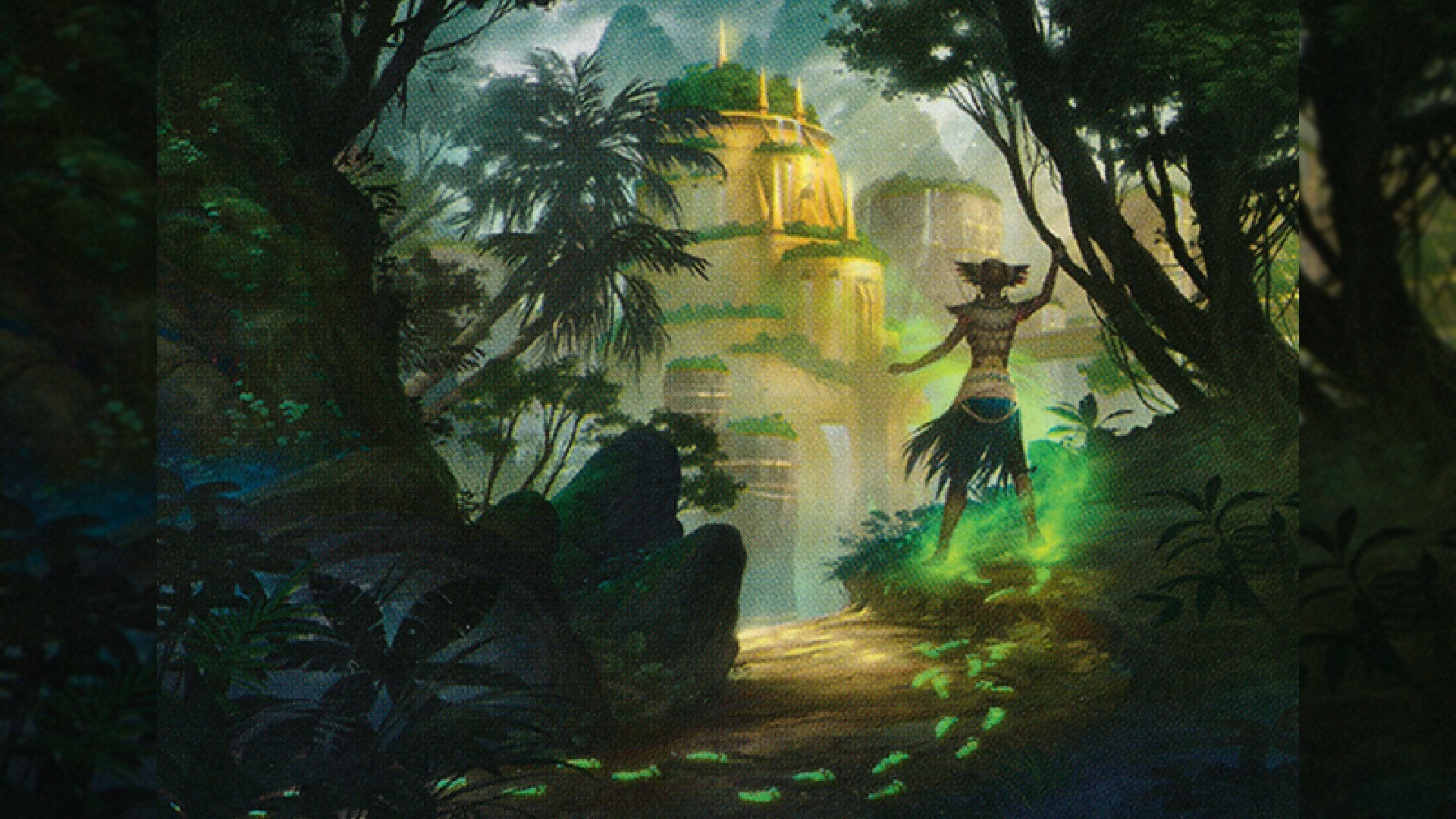![]() Key Takeaway
Key Takeaway
Explore is a keyword action in Magic: The Gathering that lets you reveal the top card of your library and then possibly draw a Land or buff a Creature. You can also mill a card through this process.
This mechanic was originally from 2017’s Ixalan expansion but returned in 2023’s spiritual successor The Lost Caverns of Ixalan.
If you need another way to draw Lands, put +1/+1 counters on your Creatures, or mill a few cards in Magic: The Gathering, there’s a handy keyword action you should consider. The Explore mechanic lets you do all of the above during an MTG game.
Table Of Contents
What Is Explore in MTG?
Explore is a keyword action that lets you reveal the top card of your library and then possibly draw a Land or buff a Creature. You can also mill a card through this process. We’ll break down the steps so you can see how it works more easily.
- You cast a card with the Explore effect
- Then you choose a Creature with which to “explore” the top of your library
- Reveal the top card of your library
- If it’s a Land, put it in your hand
- If it’s not a Land, the Creature you selected to Explore gets a +1/+1 counter
- Put the nonland card either back on top of your library or in your graveyard
An Example of How Explore Works
Let’s say you’ve just cast Brazen Buccaneers. Since its Explore effect triggers upon this Creature entering the battlefield, it’s time to look at your library! First, you must pick a Creature out of those you control. For this example, we’ll pretend that you only have Brazen Buccaneers on your side of the battlefield.
Select Brazen Buccaneers and then reveal the top card to determine what happens next. There are two potential scenarios here. Firstly, if you draw a Land, you put it in your hand and the effect ends.
However, if you draw anything besides a Land, your exploring Creature (in this case that would be Brazen Buccaneers) gets a +1/+1 counter. After that, you decide whether to place the revealed nonland card back on top of your library or put it in your graveyard. For instance, if the revealed card is Abrade (an Instant), you must choose either to rest it on top of your library or send it to the graveyard.
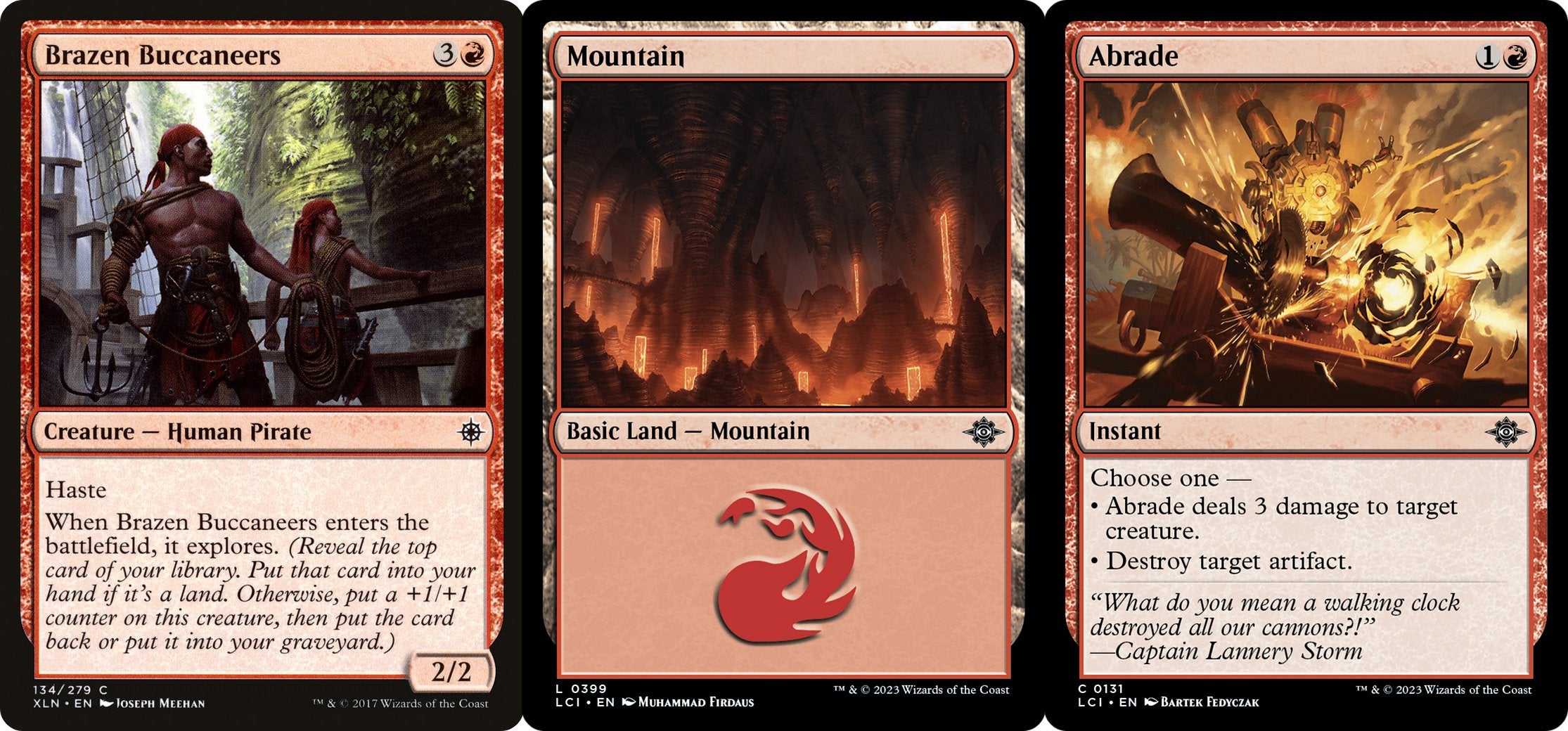
If you revealed a Land, there’s no choice to make. You simply get a Mountain (or another Land) to play whenever you want!
Determining if it’s better to top-deck or discard a nonland card is a bit trickier. Frankly, that all depends on the scenario. If you’ve got enough mana to cast Abrade—and there’s a Creature with less than 3 toughness or an Artifact annoying you—it would be wise to leave Abrade on top of your library. That way, you can draw it next turn and destroy a nuisance.
Alternatively, if you’ve got permanents on the battlefield that would benefit from milling, it may be better to send Abrade to the graveyard. Permanents that get powered up from more cards being discarded, Enchantments that let you cast Instants from outside the battlefield, and more are prime reasons to use Explore for sending cards to the graveyard.
How to Use Explore in MTG
You can make great use of the Explore mechanic if you need help in any of these three areas: drawing more Lands, giving Creatures +1/+1 counters, and placing cards into your graveyard.
A Land in the Hand!
If you’re a fan of high-cost cards, you’ll need plenty of mana to cast them. Since the most straightforward way to get mana is to tap Lands, having more of the latter on your side of the battlefield is ideal. Using Explore plus some Explore support can help you get your beefiest Creatures into play sooner.
A relevant Creature for such support would be Nicanzil, Current Conductor. If you Explore and reveal a Land card, in addition to drawing it, Nicanzil lets you place it on the battlefield (tapped).
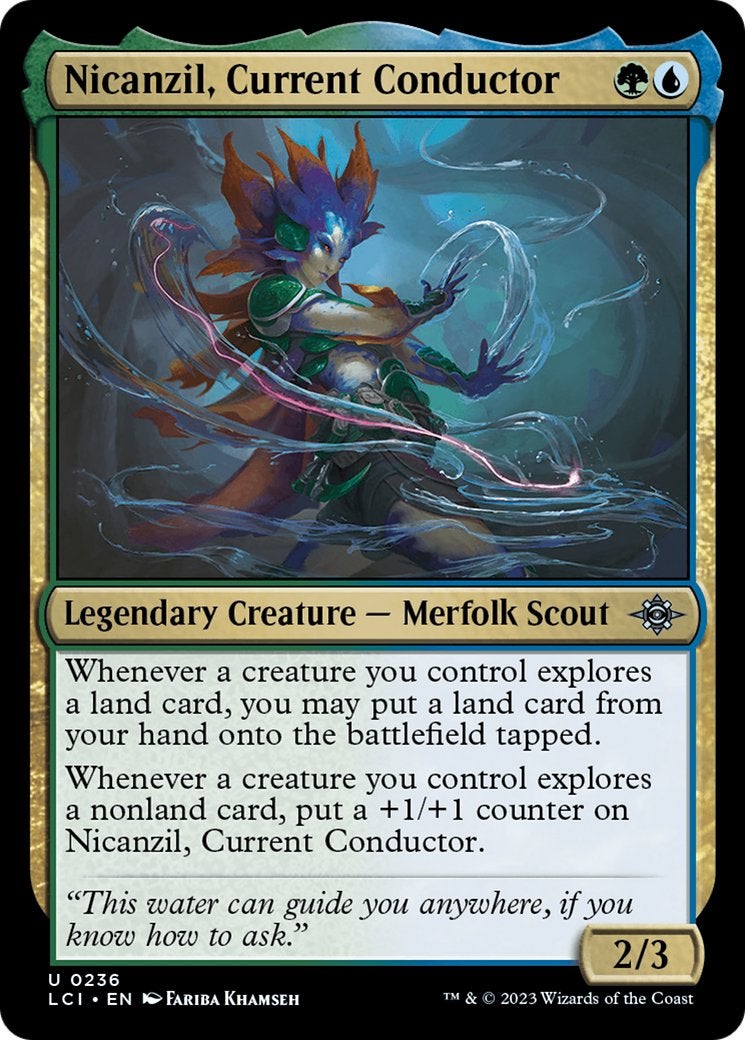
Nicanzil would be a great spell to cast early in a game. Doing so and then exploring would help you gather a lot of Lands quickly. As such, you’ll be able to cast more and more spells sooner than previously possible.
On top of that, if you don’t reveal a Land card through exploring, Nicanzil gets a +1/+1 counter to become more formidable. This is in addition to your exploring Creature getting the same buff. In that regard, you can potentially get Nicanzil to Explore so that they get two +1/+1 counters for even greater strength.
Counting Higher and Higher
While Phyrexia and Ixalan are very different places, there’s no telling where the biomechanical menaces will spread next…which is a flavorful way of saying you can use Proliferate in combination with Explore for some satisfying results.
Proliferate in MTG works by increasing how many counters are on a permanent. Therefore, if you Proliferate after you Explore, you’ll get an additional +1/+1 counter on your exploring Creature.
A decent combo here could be to Explore with a spell and then cast Unnatural Restoration.
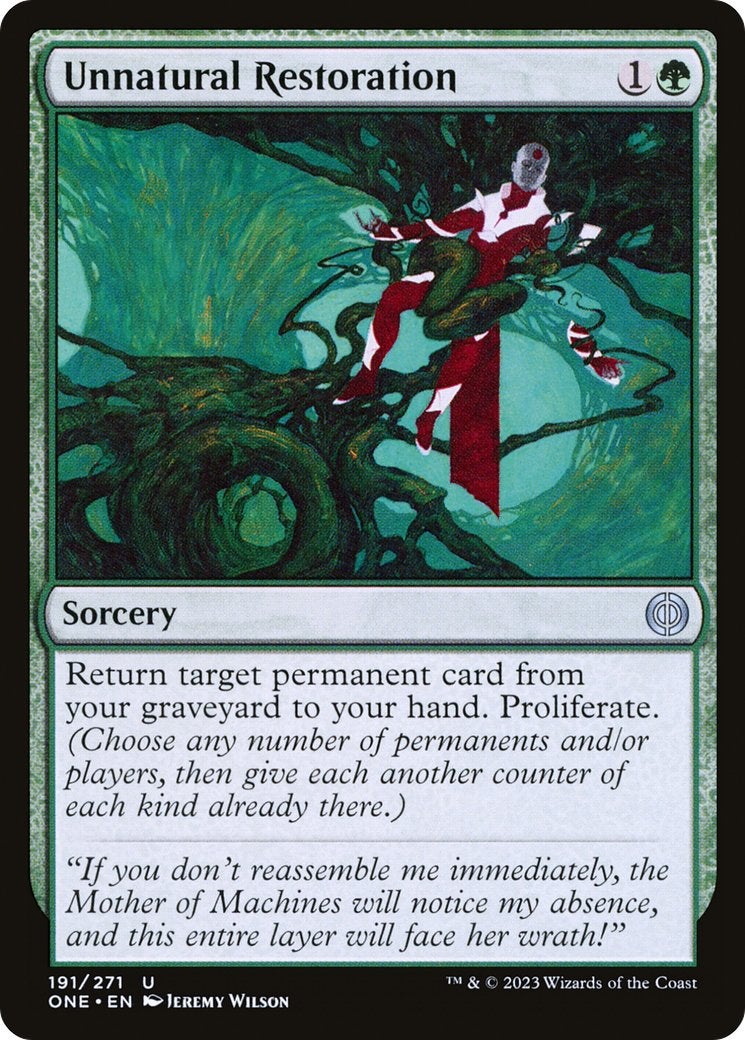
Through this, you can Explore and then send a nonland card to the graveyard—giving a Creature a +1/+1 counter in the process. Following that, you can cast Unnatural Restoration to grab that card from the graveyard (if it’s a permanent) before you Proliferate to buff your already powered-up Creature.
Descend to Ascend in Might
Explore synergizes nicely with another main MTG mechanic from The Lost Caverns of Ixalan—Descend. This latter mechanic gets triggered whenever a permanent is sent to the graveyard. If the Descend criteria are fulfilled, something good will happen. Let’s examine one of the more simple Descend cards to illustrate our point.
Child of the Volcano is a Creature that gets stronger the more you Descend. By using Explore at least once per turn, you can send large quantities of permanents to your graveyard throughout a game—which triggers Child of the Volcano’s Descend effect once each turn.
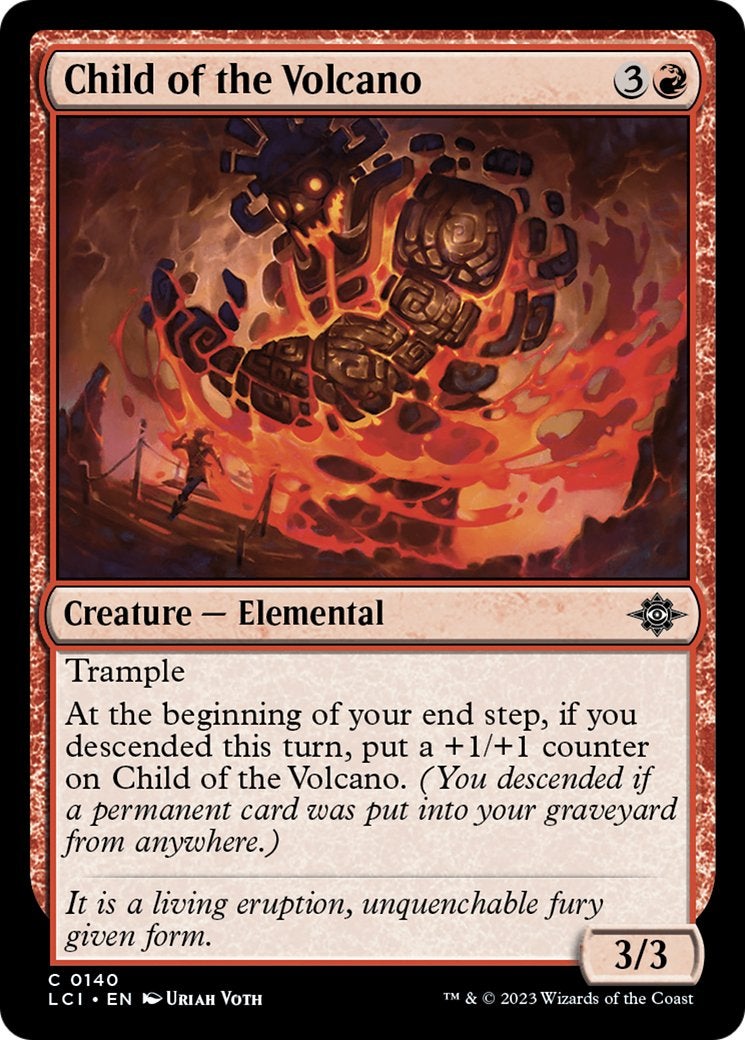
Since it also has Trample, you can deal some big damage with this elemental brute. As usual, the Trample ability and multiple +1/+1 counters always go well together.
How to Counter Explore
Countering Explore wouldn’t help you too much even if you pull it off. Instead, focus on predicting what your opponent is trying to do with their exploration.
Are they using Explore to draw more Lands, or are they trying to power up their Creatures? Are they continuously sending a specific type of card to the graveyard? Ask yourself these questions to figure out your foe’s strategy. In doing so, you’ll be able to come up with better counterplays.
On that note, counterspell variants won’t help much here. Explore doesn’t focus on casting anything, only drawing, buffing, and discarding—so countering will do nothing except waste some of your mana.
Trivia and History of the Explore Mechanic
Before returning in 2023’s The Lost Caverns of Ixalan, it was a core mechanic in the thematic predecessor of this expansion. Ixalan from 2017 was the birthplace of the Explore effect, along with the Enrage ability.
Explore is a flavorful concept because Ixalan—as a plane—focuses heavily on the exploits of pirates. What’s more appropriate for pirates than exploring for treasure? Short answer: nothing! It’s time to rack up those Treasure Tokens.
Explore connects aptly to yet another MTG mechanic brought forth in The Lost Caverns of Ixalan expansion: Discover—which also works through delving into your library. We love it when core mechanics in a set synergize! It adds a lot of flavor and enhances the storylines of each expansion. Just beware of all the pirates and dinosaurs on your next expedition!


